Grand Old Flag, Hot New Products
Erik J. Martin //July 7, 2015//
 They say the three most important rules of real estate are location, location, location. That truism appears to be extending to the world of pet merchandise, as more retailers are experiencing increased demand from shoppers who prefer products made in America using home-grown ingredients. And manufacturers are getting the message, too, as evidenced by a growing percentage of companies that are choosing to conduct operations within the States and source more materials from here.
They say the three most important rules of real estate are location, location, location. That truism appears to be extending to the world of pet merchandise, as more retailers are experiencing increased demand from shoppers who prefer products made in America using home-grown ingredients. And manufacturers are getting the message, too, as evidenced by a growing percentage of companies that are choosing to conduct operations within the States and source more materials from here.
The proof, of course, is in the percentages. Consider these latest statistics:
•Per a 2014 Packaged Facts pet owner survey, 61 percent and 50 percent of consumers who bought dog and cat products, respectively, said they actively sought out Made in the USA pet foods.
•Nearly 52 percent of respondents to a 2014 American Certified poll selected Made in the USA as the factor most important to them when purchasing a product, other than price/quality; 17 percent chose locally made, making it the second most important factor.
•Based on a 2014 Market LOHAS MamboTrack Consumer Research study, 40 percent of respondents chose Made in the USA sourcing as the most important quality for their pet food.
•According to a 2013 Gallup poll, 45 percent of Americans indicated they had made a special effort to purchase American-made goods and 64 percent were willing to pay extra to buy a U.S.-manufactured product than a comparable item made overseas.
•When asked to pick between a product made in the States and an identical one manufactured abroad, 78 percent of Americans who responded to a Consumer Reports National Research Center survey in 2013 indicated they would prefer the former.
•43 percent of retail chief financial officers recently surveyed by consulting firm BDO said North America offers the most attractive sourcing opportunities in 2015—up from 30 percent last year.
Indeed, consumers care where their pet wares come from and many are even willing to pay a slight premium for the privilege of supporting American-made products.
But before completely restocking your inventory with goods bearing the red, white and blue, it’s important to understand what the Made in the USA standard means, the pros and cons of manufacturing and retailing these products, and the best merchandising strategies for success.
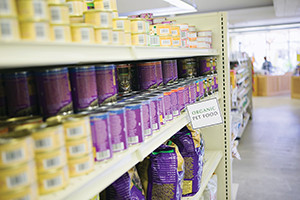 The Facts and Fables of the Label
The Facts and Fables of the Label
It’s easy for pet store owners and patrons alike to be confused by the wide array of statements, claims, labels and logos displayed on product packaging. These statements can include “Made in the USA,” “American Made,” “True American Quality,” “Produced in the USA,” and “Truly Made in the USA” and can be accompanied by emblems of Lady Liberty or Old Glory. These words and images may or may not abide by regulations provided by the Federal Trade Commission (FTC), which is responsible for protecting consumers from product claims that are false, deceptive or misleading.
The FTC’s Made in USA standard, which governs this issue of labeling, mandates that marketers and manufacturers that promote their products as Made in USA must meet the “all or virtually all” standard. “All or virtually all” means that all significant parts and processing that go into the product must be of U.S. origin. In other words, the product should contain no (or negligible) foreign content. Hence, simply combining ingredients within the U.S. or obtaining ingredients from a broker within 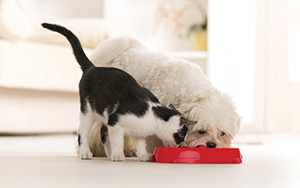 the States is insufficient. The bottom line: It’s hard to justify and defend use of the Made in the USA standard claim if the ingredients are imported.
the States is insufficient. The bottom line: It’s hard to justify and defend use of the Made in the USA standard claim if the ingredients are imported.
Per the FTC, unless a qualified Made in the USA standard claim is made (for instance, a label stating “70 percent U.S. content”), such a claim for a product can be expressed (worded as “American made,” for example) or implied without qualification if it is “all or virtually all” made in the States. Therefore, a box of dog treats can contain ingredients sourced in the U.S. (translation: actually grown and produced on American soil) but processed and packaged abroad, in which case it cannot be labeled Made in the USA.
Businesses that slap a Made in the USA claim on their merchandise have to be prepared to prove that claim if questioned by the FTC. Violators are subject to steep fines and penalties. (For details on complying with the FTC’s Made in the USA standard, visit tinyurl.com/p9a4mnh).
Manufacturers that comply with the FTC rule aren’t obligated to reveal or display their Made in the USA status on their packaging but most capitalize on the marketing benefits of doing so by fashioning their own custom insignia proclaiming the product as American made. Many opt to employ standardized logos that are popular in the industry, such as Made in the USA Brand and Made in USA Certified. These are offered by a small number of organizations, some of which provide third-party audit/accreditation services to certify a Made in the USA claim. Each of these groups offers its own proprietary logo for products that are certified.
“The FTC does not in and of itself provide any certification to manufacturers that a particular item is Made in America,” said Maximilian Linder, technical sales manager for Bihlerflex LLC, the Phillipsburg, N.J.-based manufacturer of The Perfect Pet Products, including The Perfect Leash and The Perfect Dog Toy, all made from a proprietary 100-percent polyurethane recipe and packaged, warehoused and distributed in the USA. “In this respect, it is almost like we currently have an honor system.”
Fueling the “Buy American” Movement
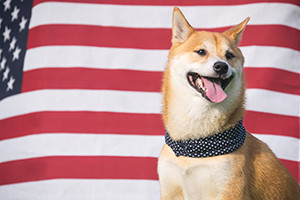 Bobbi Panter, founder/president of Bobbi Panter Pet Products, Chicago, Ill., which manufactures and sells natural dog and cat shampoos and conditioners made and sourced in the USA, said pet product recalls in recent years, particularly for dog foods and pet jerky treats made in China, are propelling the Made in the USA trend.
Bobbi Panter, founder/president of Bobbi Panter Pet Products, Chicago, Ill., which manufactures and sells natural dog and cat shampoos and conditioners made and sourced in the USA, said pet product recalls in recent years, particularly for dog foods and pet jerky treats made in China, are propelling the Made in the USA trend.
“Pets died because of tainted ingredients and pet owners are worried about foreign-sourced ingredients,” said Panter, who adds that American pride is also boosting the trend. “Consumers feel safer with products made and sourced in the USA.”
The fact that the recall issue has still not been resolved (a $6.5 million fund designated to pay off a class-action settlement to owners whose dogs got sick or died after eating tainted pet jerky has yet to be distributed) continues to cause great uncertainty about ingredients and general distrust, notes Joe Wurm, brand manager, TropiClean Pet Products, Wentzville, Mo., makers of TropiClean pet grooming, oral care, stain and odor products and dog treats.
“Consumers, especially millennials—now the largest demographic that own pets—want to have more transparency with regard to ingredients and want more nutritional information about the products that they feed their pets,” said Wurm.
Pam Mahar, executive vice president of sales and marketing for Mahar Manufacturing, which produces 4Legs4Pets pet cots in Van Buren, Ark., agrees that safety is the number one reason motivating consumers.
“More and more, we’re learning about products that have been recalled and import bans placed on products, from pet foods to toothpaste, due to the chemicals and poisonous compounds used in China-made products. Consumers are paying attention,” said Mahar.
Pressure from the public is compelling pet product brands to abandon foreign production, especially from China and relocate operations stateside. The Great Recession and national concerns about job  outsourcing have also awakened patriotic purchasing tendencies in consumers, and manufacturers have taken notice. Consider that 60,000 manufacturing jobs were added in the USA in 2014 compared to 12,000 in 2003, based on new data from the Reshoring Initiative. This trend has been triggered by many factors, including rising wages in countries traditionally known for cheap labor, escalating import duties and shipping expenses and desire for greater quality control that can be achieved when a product is made in-house on American turf.
outsourcing have also awakened patriotic purchasing tendencies in consumers, and manufacturers have taken notice. Consider that 60,000 manufacturing jobs were added in the USA in 2014 compared to 12,000 in 2003, based on new data from the Reshoring Initiative. This trend has been triggered by many factors, including rising wages in countries traditionally known for cheap labor, escalating import duties and shipping expenses and desire for greater quality control that can be achieved when a product is made in-house on American turf.
“Here, we know Americans are being treated humanely in the workplace,” Mahar said. “I believe we’ll start seeing more legislation to spur investment in our country’s resources, too, which will allow more production of raw materials and jobs in the USA.”
Kevin Skibinski, founder/president of SKI Innovations LLC, the Geneva, Ill.-headquartered makers of Paw Boss, a dog paw washing device, said employment concerns are no small factor.
“Most Americans want to buy products that will help keep or create jobs,” Skibinski said.
Supporting the economy and community you live in directly correlates to the products you buy and consume, said Stephanie Boone, founder and CEO of Wondercide Natural Products in Austin, Texas, which makes all-natural pest control and pet care products.
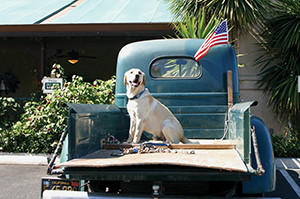 “There is a sense of trust, responsibility and quality when purchasing Made in the USA products,” she said. “I believe this trend is here to stay across all industries.”
“There is a sense of trust, responsibility and quality when purchasing Made in the USA products,” she said. “I believe this trend is here to stay across all industries.”
Preferred by Pet Shops and Patrons Alike
If you’re not carrying a healthy variety of American-made pet merchandise today, chances are your competitors are.
“We are in the midst of significant change to Made in the USA products and pet stores are adjusting to this trend and changing their stores to accommodate these products. Customers are demanding it,” Skibinski said.
And retailers are requesting it, too. According to Panter, many more pet stores are asking if her products are American made.
Large chains bowing to this trend have garnered headlines in recent months. Petco, for example, which has been expanding its American-made offerings in the past few years, recently announced it will stop selling dog and cat treats made in China. Plenty of independent pet retailers and boutiques continue to welcome and promote Made in the USA products, too.
“Pet parents are looking for reassurance,” said Ward Johnson, owner/president of Sojos in Minneapolis, a maker of shelf-stable dog and cat foods and all-natural dog treats. “It’s helpful to know that their store of choice has already done the legwork for them and that they can be inherently confident in the products and knowledge team members provide.”
Private data collected by Boone’s company reveal that 75 percent of affluent shoppers and more than 50 percent of the general consumer population prefer American-made products.
“It’s an added benefit to retailers to know that they are offering their customers a trusted and quality product,” Boone said. “Having it be made and sourced in the USA offers additional transparency and peace of mind, knowing that if they want to know more about the product, they can access the company more easily. And carrying more products that have a direct correlation and impact on your neighbors creates a sense of solidarity and likelihood for repeat customers. I think calling attention to brands that take the time and commitment to ensure quality Made in the USA production methods is a strong opportunity to drive additional business and improve public awareness.”
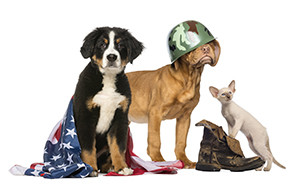 Educated consumers sooner or later realize that USA-made/sourced products can be more cost-efficient, even if they are more expensive, because experts insist they are better quality .
Educated consumers sooner or later realize that USA-made/sourced products can be more cost-efficient, even if they are more expensive, because experts insist they are better quality .
“Customers of large retailers who carry cheap dog food buy those products believing they are getting a bargain and saving money,” said Linder. “However, those cheaper foods are often loaded with fillers, so the dog doesn’t stay satisfied and needs to consume more of the product. In the end, the consumer learns they need to buy many times more of the cheaper product than would be needed if using a more expensive, higher-quality food.”
Johnson warns, however, that trying to exclusively carry USA-made products is a challenging strategy, “given the globalization of both agriculture and manufacturing.”
Benefits and Drawbacks
For Mahar Manufacturing, the decision to set up shop domestically has proven to be smart and rewarding. First, American-made raw materials are brought to the company’s factory. Next, various processes are completed on site, including welding, crimping, powder coating, injection molding and sewing. Last, the pet cots produced are stored at and shipped directly from the same facility.
“We control the quality and workmanship and processes under one roof. We wanted to produce safe, quality products and support our economy. It’s a sense of accomplishment, too, seeing our business grow from the beginning in 1988,” said Mahar. “Our children were small when we started our company and now they are a vital part of the decision making. One or more of our Mahar family members is involved in every aspect of our business.”
Proponents say the advantages of manufacturing in America are plentiful, including:
• Job creation and economic impact: more American manufacturing jobs can reduce the unemployment rate and expand the tax base to pay for benefits like Medicare and Social Security.
• Improved consumer trust in and support for your brands.
• Functionally superior products with safer ingredients and fewer toxins.
• Easier quality control for development and production.
• Better Inventory Control.
• Faster reaction times to customer requests.
• An additional layer of protection from patent infringement or trade secrets.
Tracey Quillin, category manager for Radio Systems Corporation, the Knoxville, Tenn.-based owner of PetSafe, which makes indigo dog treats, said manufacturing in the USA was the obvious choice.
“The knowledge that our manufacturing is held to high U.S. standards for food safety is a point of pride for our team and we hope it provides pet parents with peace of mind each time they give an indigo treat,” Quillin said. “In addition, because we sell the majority of our treats in North America, making them here provides shorter lead times to our retail partners.”
Development costs are also lower when it comes to travel and you have more flexibility in a number of development factors like visiting the plant, holding meetings and conducting product trials, according to Wurm.
“As a manufacturer and owner of my own formulas, [making and sourcing] in the USA ensures that you know the quality of each ingredient and have access to the company if something is not up to  standard,” Panter said.
standard,” Panter said.
Skibinski agrees that convenience and accessibility is a big plus.
“If a manufacturing problem occurs, I can simply get in my car and drive to the supplier to evaluate the problem. If my supplier was overseas, that may be a bit more difficult,” said Skibinski. “Overall, sourcing locally provides much shorter lead times, which impacts my working capital and if there are any delays in imports due to various reasons—such as a dock strike—all those can be avoided.”
Of course, making products in the States can have its disadvantages, including increased cost of materials, ingredients and labor, as well as stricter manufacturing and production guidelines.
“U.S. manufacturers often have to cut costs and expenses from every angle, lowering their profit margin,” Mahar said. “And retailers who choose to buy American-made products may have to lower their profits on those items to be more competitive.”
Linder said his company tries to offset the higher cost of raw materials and labor with better manufacturing technology, better quality and lower transport costs and logistics.
“I can’t tell you how many times I heard that we needed to source our new product overseas when we were initially launching it,” Skibinski said. “Depending on your product, it may make sense to source overseas but you need to consider all aspects of doing business—freight, supplier management, cost of quality, delivery, working capital, etc. Many of these items get lost in the simple quotation, which is typically just piece–part–price and doesn’t encompass all those extra costs. Once you roll in all these factors, that is your true ‘landed cost,’ and that’s what you need to evaluate to make sure you are comparing apples to apples.”
“Justifying domestic production also depends on picking the right supplier and controlling your costs well,” said Wurm.
Ultimately, “you can always get a cheaper price somewhere but what really matters is the quality of the product, which ultimately represents your brand,” he said. “There is a reason why things are less expensive. You get what you pay for.”
Merchandising in the USA
When it comes to stocking and displaying American-made items in your store, experts recommend creating a designated section.
“I think consumers would shop that aisle first and if they couldn’t find what they wanted then they would look outside of that aisle. It would show consumers that there are American-made alternatives to the overseas products,” Linder said. “I think people tend to assume products are mostly made in China. A separate aisle would be a good way to showcase American-made products and educate the public.”
Tabitha Cromer, marketing and product manager for Fort Worth, Texas-headquartered Tomlyn, manufacturer of supplements and health aids for pets, agrees that separating merchandise across different sections “can be frustrating for the pet parent when they have to go to different areas to look for the same type of product. It could be better to have the products together and let the consumer compare the variety that is offered to them.”
Grouping together products with American-made labels can also draw more attention to the labels themselves and reinforce their significance in the shopper’s mind.
“The more consumers get used to seeing the label, the more they think about the importance of Made in the USA and the more [they] tend to look for it,” said Anita Dungey, president of Auburn Leathercrafters in Auburn, N.Y.
Retailers should also use attention-getting signage to showcase USA-produced merchandise, especially at the shelf level.
“Give your customers a choice but call attention to any products that are made and sourced in the USA and encourage them to buy local,” said Panter.
Bryan Nieman, brand director for Fromm Family Foods in Mequon, Wis., said utilizing POP materials, signage and clever displays can help retailers “draw attention to the stock and start conversations with customers, which ultimately will provide better sales.”
Linder also recommends keeping your radar up for new and different Made in the USA foods and products that could generate enthusiasm and be worth stocking.
“There are brands here that are researching and moving forward with producing foods specific to dogs with restrictions,” including hypoallergenic foods, said Linder.
Boone said she’s witnessed many new Made in USA brands surfacing lately, especially consumable and topical products that affect the general health and well-being of animals (as opposed to accessories).
“These items should see a bigger [sales] impact, as they require additional research and increased deliverables on quality,” said Boone.
Wurm suggests reserving some shelf space for freeze-dried pet foods and treats made in America—a subcategory that has grown significantly.
“Freeze-dried pet food is easier for retailers to handle because it requires no refrigeration or freezers in the store and it doesn’t have the hygiene concerns like raw pet food,” he said.
According to Linder, the best bet when choosing your USA-made product mix is to be sure each item delivers on quality and, most importantly, safety. That means selecting brands carefully.
“The product should never cause any harm to a pet. The responsibility is on the manufacturers and distributors to behave ethically, to employ honest buying practices when they see a quality product being made in the USA and to promote this product by buying and marketing it rather than simply looking to make a cheap knock-off of it,” Linder notes. “The more we see this ethical mindset and  loyalty to local manufacturing, the more the Made in the USA movement will continue to grow.”
loyalty to local manufacturing, the more the Made in the USA movement will continue to grow.”
Riding the Momentum
The good news for retailers who enjoy selling Made in the USA products and the loyal, satisfied customers they attract? You can likely expect much more to come.
“I wouldn’t even consider buying ingredients or making my products outside of the United States,” Panter said. “Yes, it is more expensive but we have control over how and with what our products are being made. It makes a big difference to our customers and to us because we know we are selling the best products with high-quality ingredients.”
Boone said that to be a great American company, you have to start here and stay here.
“If we can do something cheaper or faster by sending it overseas, what are we giving up to gain profit? The answer is oftentimes quality and integrity. Those same attributes are important to our customers when they choose our products,” said Boone. “Choosing to be an American-made company has given our brand and corporate identity added pride, integrity and proof that the American Dream is still attainable.”
In the end, adds Johnson, “it may not be the cheapest way to manufacture but I firmly believe it results in a better product, a happier customer and—most important of all—healthier pet.”


















